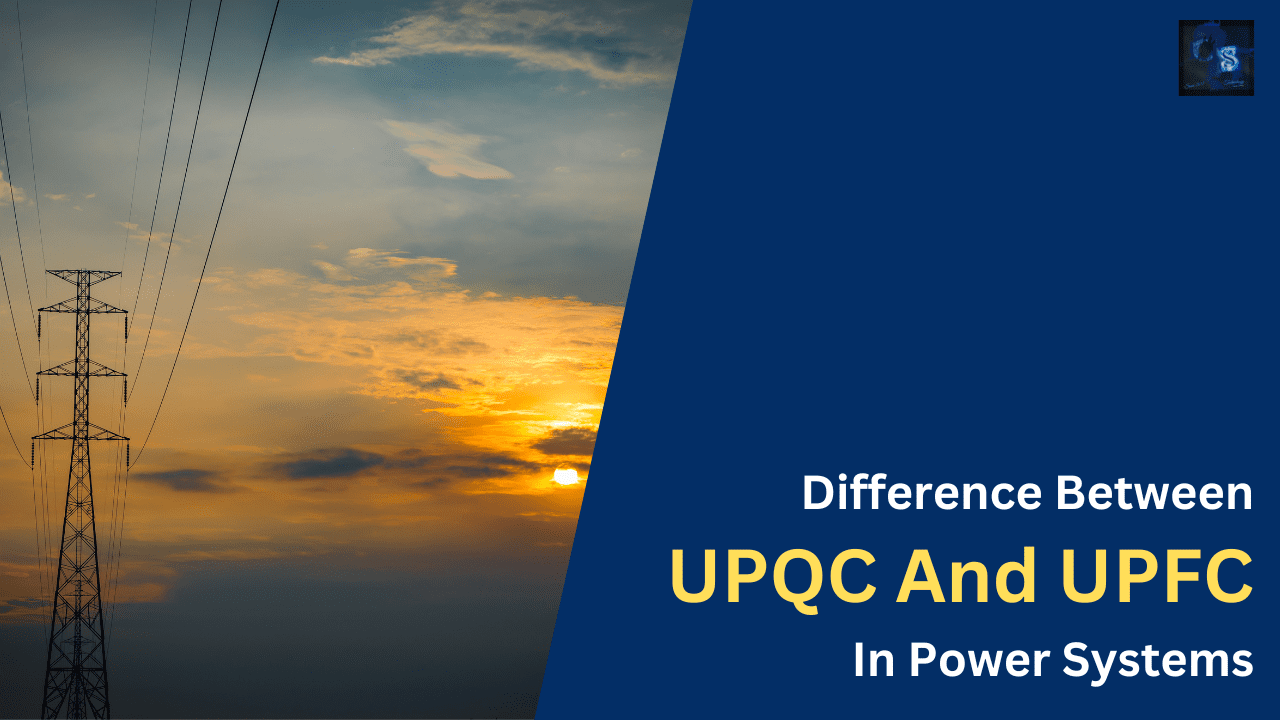Difference Between UPQC And UPFC In Power Systems
Hello guys, welcome back to our blog. Here in this article, we will discuss the difference between UPQC and UPFC in power systems, how both are different from each other and what is the actual purpose of each in power systems.
If you have any electrical, electronics, and computer science doubts, then ask questions. You can also catch me on Instagram – CS Electrical & Electronics.
Also, read:
- Difference Between DBMS And Blockchain Technology
- Battery Management Systems In Electric Vehicles, BMS Operations
- Top 5 Programming Languages Used In The Semiconductor Industry
Difference Between UPQC And UPFC In Power Systems
The Unified Power Quality Conditioner (UPQC) and the Unified Power Flow Controller (UPFC) represent specialized electrical power apparatus designed to enhance power quality and oversee power distribution within electrical power networks. Nevertheless, there exist notable distinctions between these two devices.
Unified Power Quality Conditioner (UPQC)
The Unified Power Quality Conditioner (UPQC) serves as an advanced power electronic device that amalgamates the functionalities of a shunt active power filter (APF) and a series APF, effectively integrating them into a single compact unit.
The shunt APF performs the crucial role of compensating for a range of issues, encompassing harmonics, voltage imbalances, and reactive power discrepancies at the specific point of common coupling (PCC), which is a pivotal juncture in power distribution.
In tandem, the series APF within the UPQC assumes the responsibility of counteracting voltage fluctuations, such as sags and swells, while also addressing voltage imbalances and harmonics, all centered around the PCC.
This dynamic tandem operation makes UPQCs particularly well-suited for deployment within distribution systems where the aim is to elevate power quality, especially for systems supporting highly sensitive loads.
Unified Power Flow Controller (UPFC)
On the other hand, the Unified Power Flow Controller (UPFC) emerges as another power electronics marvel, employing a combination of two voltage source converters (VSCs) along with a shared direct current (DC) link capacitor. This intricate setup is instrumental in wielding control over both real and reactive power flow within a transmission line, effectively shaping the power dynamics.
The shunt VSC component of the UPFC takes on the pivotal task of rectifying a myriad of power quality issues, encompassing the mitigation of harmonics, the rectification of voltage imbalances, and the correction of reactive power distortions, all of which manifest at the pivotal point of common coupling (PCC).
Simultaneously, the series VSC assumes a more dynamic role, capable of introducing or absorbing voltage, thereby ensuring effective compensation for voltage disturbances like sags and swells. Moreover, the series VSC exercises influence over real power flow, channeling it in a controlled manner.
As a natural consequence, UPFCs primarily find their purpose in transmission systems, where the ultimate goal is to enhance the stability and controllability of the overall power system, ensuring the seamless and efficient transmission of electrical energy.
This was about the “Difference Between UPQC And UPFC In Power Systems“. I hope this article may help you all a lot. Thank you for reading.
Also, read:
- 10 Tips To Maintain Battery For Long Life, Battery Maintainance
- 10 Tips To Save Electricity Bills, Save Money By Saving Electricity
- 100 (AI) Artificial Intelligence Applications In The Automotive Industry
- 100 + Electrical Engineering Projects For Students, Engineers
- 1000+ Automotive Interview Questions With Answers
- 1000+ Control System Quiz, Top MCQ On Control System
- 1000+ Electrical Machines Quiz, Top MCQs On Electrical Machines
- 1000+ MATLAB Simulink Projects For MTech, Engineering Students

